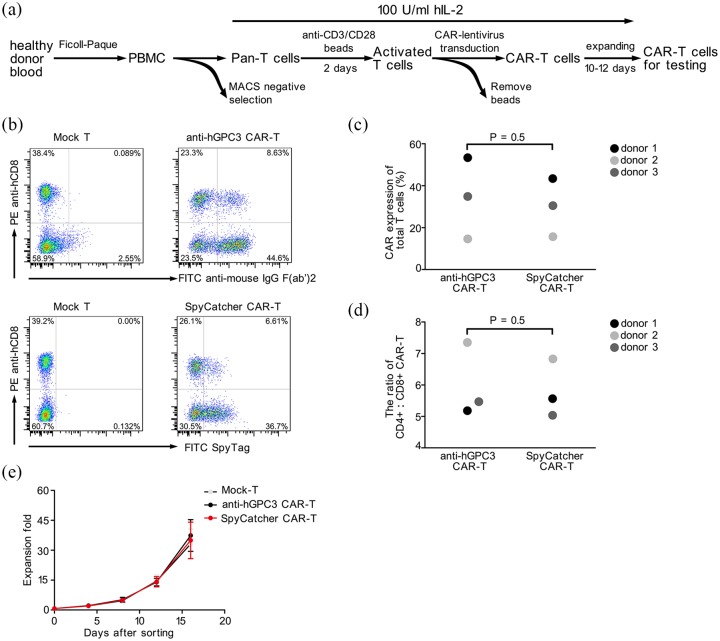Figure 3.
The preparation and characteristics of split and conventional anti-hGPC3 CAR-T cells. (a) The process of generating CAR-T cells. Primary human T cells from three healthy adult donors were transduced with CAR lentivirus and examined 10–12 days after transduction by flow cytometry. (b) Representative dot plots showing the transduction efficiency of CAR-T cells. All cells were gated on CD3+ T cells. Mock T represents T cells that underwent the same activation and expansion treatment without lentivirus transduction. (c, d) SpyCatcher CAR-T cells exhibited CAR expression levels and CD4/CD8 ratio comparable with those of conventional antihGPC3 CAR-T cells. (e) The expansion folds of total cells of donor 1 were monitored by counting the cell number using a hemocytometer every 4 days during the whole expansion period. Error bars represent SD.
CAR-T, chimeric antigen receptor T; hGPC3, human glypican-3; MACS, magnetic-activated cell sorting; PBMC, peripheral blood mononuclear cells; SD, standard deviation.

